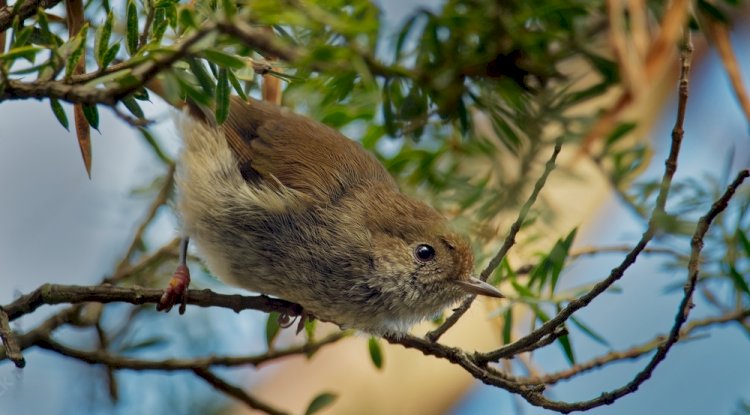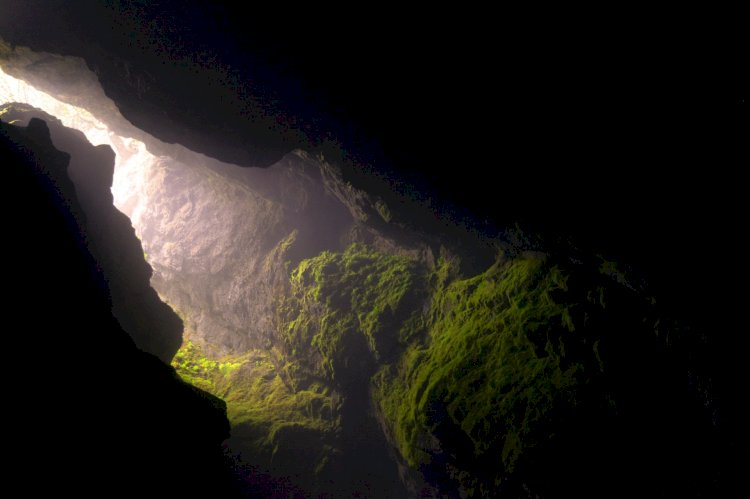Birding Tasmania - Top Bird Watching Spots and Endemic Species
Explore the captivating world of birdwatching in Tasmania. From rare endemics to migrants, embrace the thrill of birding Tasmania!

I. Introduction to Bird Watching in Tasmania
Bird watching, also known as birding, is a captivating hobby that allows enthusiasts to explore the world of avian species in their natural habitats. Among the many alluring destinations for birdwatching, Tasmania stands out as a true paradise for ornithologists and nature enthusiasts alike. Nestled in the southernmost part of Australia, Tasmania offers a unique opportunity to encounter a diverse range of bird species, both endemic and migratory. From breathtaking coastal regions to lush national parks, this island state is a haven for birdlife.
A. The Allure of Tasmania's Diverse Avian Species
Tasmania boasts a remarkable array of bird species, drawing birdwatchers from around the globe. The island's geographical isolation and diverse ecosystems have allowed various bird species to thrive and evolve independently, leading to an impressive assortment of avifauna found nowhere else in the world.
B. The Significance of Tasmania as a Birdwatching Destination
Tasmania's reputation as a birdwatching destination is not only due to its remarkable birdlife but also its commitment to conservation. The island's conservation efforts have created a sanctuary for numerous vulnerable and endangered species, making it an important location for bird enthusiasts and researchers seeking to witness and protect unique avian populations.
C. Overview of Tasmania's Unique Ecosystems and Habitats for Birds
Tasmania's landscapes encompass a diverse range of ecosystems, from lush rainforests to windswept coasts, providing a perfect environment for various bird species. Understanding these habitats and the birds that inhabit them enhances the birdwatching experience and fosters a greater appreciation for Tasmania's natural wonders.
II. Getting Started with Bird Watching
Before embarking on your birdwatching journey in Tasmania, it's essential to familiarize yourself with the basics of birding and equip yourself with the necessary knowledge and gear to make the most of your experience.
A. Understanding the Basics of Bird Watching
1. Necessary Equipment and Gear for Birdwatching
To fully immerse yourself in the world of birdwatching, you'll need some essential equipment. Binoculars are a must-have tool for observing birds from a distance without disturbing them. Invest in a pair of high-quality binoculars with good magnification and field of view for an optimal experience. Additionally, a field guidebook specific to Tasmania's bird species will help you identify and learn more about the birds you encounter.
2. Tips for Identifying and Observing Birds in the Wild
Identifying birds can be challenging, especially for beginners. Learn to recognize key features such as plumage, size, and behavior to differentiate between species. Practice observing common birds in your local area before your Tasmania trip to sharpen your skills. Remember to be patient and quiet while birdwatching, as loud noises and sudden movements can startle birds, making them difficult to observe.

B. Respecting Wildlife and the Environment During Birdwatching
Birdwatching is not just about observing birds; it's also about respecting their natural habitats and ensuring their conservation for generations to come.
1. Ethical Birdwatching Practices
When in the wild, prioritize the welfare of the birds and their habitats. Avoid approaching nesting areas, as disturbing nests can have severe consequences for the birds' breeding success. Stay on designated trails and paths to minimize your impact on the environment and respect the privacy of the birds.
2. Protecting Natural Habitats and Conservation Efforts
Support local conservation organizations that work to protect Tasmania's birdlife and their habitats. Consider volunteering or participating in citizen science projects that contribute valuable data to bird research and conservation efforts.
III. Top Birdwatching Locations in Tasmania
Tasmania's breathtaking landscapes offer an abundance of birdwatching opportunities. Here are some of the best locations to witness the diverse avian life on the island:
A. Exploring Tasmania's National Parks and Reserves
1. Freycinet National Park
Located on the east coast of Tasmania, Freycinet National Park is a haven for birdwatchers. The park's granite mountains, pristine beaches, and diverse habitats provide an ideal environment for a wide variety of bird species. Look out for the endangered Forty-spotted Pardalote and the striking Swift Parrot during your visit.
2. Cradle Mountain-Lake St Clair National Park
In the heart of the Tasmanian Wilderness World Heritage Area, Cradle Mountain-Lake St Clair National Park is a treasure trove of birdlife. Wander through ancient rainforests and alpine heaths to spot unique species like the Green Rosella and the elusive Tasmanian Native Hen.
B. Coastal Birdwatching Spots
1. Bruny Island
Accessible by a short ferry ride from the mainland, Bruny Island is a must-visit destination for birdwatchers. The island's diverse coastline is home to a rich variety of seabirds, including Albatrosses, Shearwaters, and Australasian Gannets.
2. Maria Island
A true wildlife sanctuary, Maria Island teems with birdlife, both on its shores and inland. Keep an eye out for the rare and endangered Forty-spotted Pardalote and the beautiful Flame Robin while exploring the island's scenic trails.

C. Inland Birdwatching Sites
1. Mount Field National Park
Nestled in the heart of the Tasmanian wilderness, Mount Field National Park offers a blend of rainforests and alpine meadows, attracting a diverse array of bird species. The park is a fantastic place to spot the Yellow Wattlebird and the Pink Robin.
2. Southwest National Park
For a truly remote and wild birdwatching experience, head to Southwest National Park. This rugged wilderness is home to several endemic species, such as the Tasmanian Thornbill and the Black Currawong.
IV. Tasmania's Unique Bird Species
One of the highlights of birdwatching in Tasmania is encountering its unique and endemic bird species, found nowhere else in the world. Here are some iconic birds you should keep an eye out for:
A. Iconic Birds of Tasmania
1. Tasmanian Native Hen
The Tasmanian Native Hen, also known as the "Turbo Chook," is a flightless bird that roams the grasslands and wetlands of Tasmania. With its distinctive red facial shield and curious behavior, it's a joy to observe in its natural habitat.
2. Green Rosella
The Green Rosella is a striking parrot species with vibrant green feathers and flashes of red on its head and chest. These colorful birds are often spotted in the forests and woodlands of Tasmania.

B. Endemic Bird Species Found Only in Tasmania
1. Tasmanian Thornbill
The Tasmanian Thornbill is a tiny bird with a unique song and intricate foraging behavior. It resides in the island's shrublands and forests, darting between branches in search of insects and nectar.

2. Forty-spotted Pardalote
As one of the rarest birds in Australia, the Forty-spotted Pardalote is a true gem of Tasmania. This small, striking bird inhabits eucalypt woodlands and coastal heaths, and its population is carefully monitored due to its conservation status.
V. Bird Migration in Tasmania
Tasmania serves as an essential stopover for many migratory bird species during their long journeys. Understanding the patterns of bird migration adds another layer of excitement to your birdwatching experience.
A. Understanding Seasonal Bird Migration Patterns
Bird migration is a fascinating phenomenon where birds travel between their breeding and non-breeding grounds in search of food and better weather conditions. Learn about the migratory patterns of various species and the factors that influence their journeys.
B. Notable Migratory Birds in Tasmania
Witness the impressive arrivals and departures of migratory birds in Tasmania. Some migratory species to look out for include the Latham's Snipe, the Pacific Golden Plover, and the Short-tailed Shearwater.
C. Best Times to Witness Migratory Birds in Tasmania
Plan your birdwatching adventures around the peak migration seasons to increase your chances of spotting these feathered travelers. Research the ideal months for specific migratory species to make the most of your trip.
VI. Birdwatching Events and Festivals
Immerse yourself in the vibrant birdwatching community of Tasmania by attending birdwatching events and festivals held throughout the year.
A. Annual Birdwatching Events in Tasmania
1. The Tasmanian Bird Festival
The Tasmanian Bird Festival is a celebration of the island's avian diversity. Join fellow bird enthusiasts in guided tours, workshops, and talks by renowned bird experts, all aimed at deepening your appreciation for Tasmania's birdlife.
2. Twitchathon - A Birdwatching Marathon
If you're up for a challenge, participate in the Twitchathon, a competitive birdwatching marathon where teams compete to spot the most bird species in a set period. This thrilling event raises awareness for bird conservation and is an exciting way to bond with other birdwatchers.
B. Birdwatching Tours and Guided Excursions
Joining guided birdwatching tours enhances your birdwatching experience by providing expert insights, access to prime birdwatching spots, and a greater chance of spotting rare species. There are numerous tour operators in Tasmania catering to birdwatching enthusiasts of all levels.
VII. Documenting and Photographing Birds
Preserving your birdwatching memories through documentation and photography allows you to relive your encounters and share your passion for birds with others.
A. The Art of Bird Photography
1. Recommended Camera Equipment and Settings
Capture stunning moments with the right photography equipment. Invest in a camera with a telephoto lens to get clear and detailed shots of distant birds. Familiarize yourself with camera settings such as shutter speed and aperture to adapt to different lighting conditions.
2. Techniques for Capturing Stunning Bird Images
Patience and practice are key to successful bird photography. Learn techniques like the "wait and watch" method to capture birds in their natural behaviors. Focus on composition and lighting to add an artistic touch to your photographs.
B. Keeping a Birdwatching Journal
Maintaining a birdwatching journal helps you record your observations, document bird species, and track their behaviors throughout the seasons. Include sketches, photographs, and notes to create a comprehensive and personal record of your birdwatching journey.

VIII. Challenges and Rewards of Bird Watching
Birdwatching is a rewarding hobby, but it also comes with its set of challenges. Understanding these challenges will prepare you for a more fulfilling birdwatching experience.
A. Overcoming Obstacles in Birdwatching
1. Weather Conditions
The weather in Tasmania can be unpredictable, with sudden changes in temperature and rainfall. Dress appropriately for varying conditions and be prepared for potential weather challenges during your birdwatching excursions.
2. Bird Identification Challenges
Identifying birds accurately can sometimes be tricky, especially when dealing with similar-looking species. Invest time in studying field guides and learning key identification features to enhance your birdwatching skills.
B. The Joy of Birdwatching and Its Mental Health Benefits
Despite the challenges, birdwatching offers numerous rewards, including positive effects on mental well-being and overall health.
1. Nature's Impact on Well-being
Spending time in nature, surrounded by the beauty of Tasmania's landscapes and birdlife, can reduce stress and anxiety, promoting a sense of calm and tranquility.
2. Developing a Deeper Connection with Nature
Birdwatching fosters a deeper connection with the natural world. As you observe birds in their habitats, you'll gain a greater appreciation for the delicate balance of ecosystems and the importance of conservation.
IX. Tips for Attracting Birds to Your Garden
Enhance your birdwatching experience at home by creating a bird-friendly garden that attracts a diverse range of feathered visitors.
A. Creating a Bird-Friendly Backyard
1. Choosing the Right Plants and Feeders
Select native plants that provide food sources, shelter, and nesting opportunities for birds. Additionally, install bird feeders with a variety of seeds to attract different bird species.
2. Providing Water Sources for Birds
Birds need access to fresh water for drinking and bathing. Consider adding a birdbath or a shallow water feature to your garden.
B. Common Garden Birds in Tasmania
Discover the bird species that are likely to frequent Tasmanian gardens. From colorful lorikeets to cheeky honeyeaters, your garden can become a vibrant birdwatching hotspot.
XI. Conclusion
In conclusion, birdwatching in Tasmania is a remarkable adventure that offers an intimate encounter with the island's rich birdlife. From the iconic Tasmanian Native Hen to the elusive Forty-spotted Pardalote, the diversity of avian species and their unique habitats make Tasmania a paradise for birdwatchers. By practicing ethical birdwatching, supporting conservation efforts, and documenting your observations, you can contribute to the preservation of Tasmania's precious birdlife for generations to come. So pack your binoculars, prepare your camera, and embark on an unforgettable birdwatching journey through the enchanting landscapes of Tasmania.
Share
What's Your Reaction?
 Like
0
Like
0
 Dislike
0
Dislike
0
 Love
0
Love
0
 Funny
0
Funny
0
 Angry
0
Angry
0
 Sad
0
Sad
0
 Wow
0
Wow
0
















